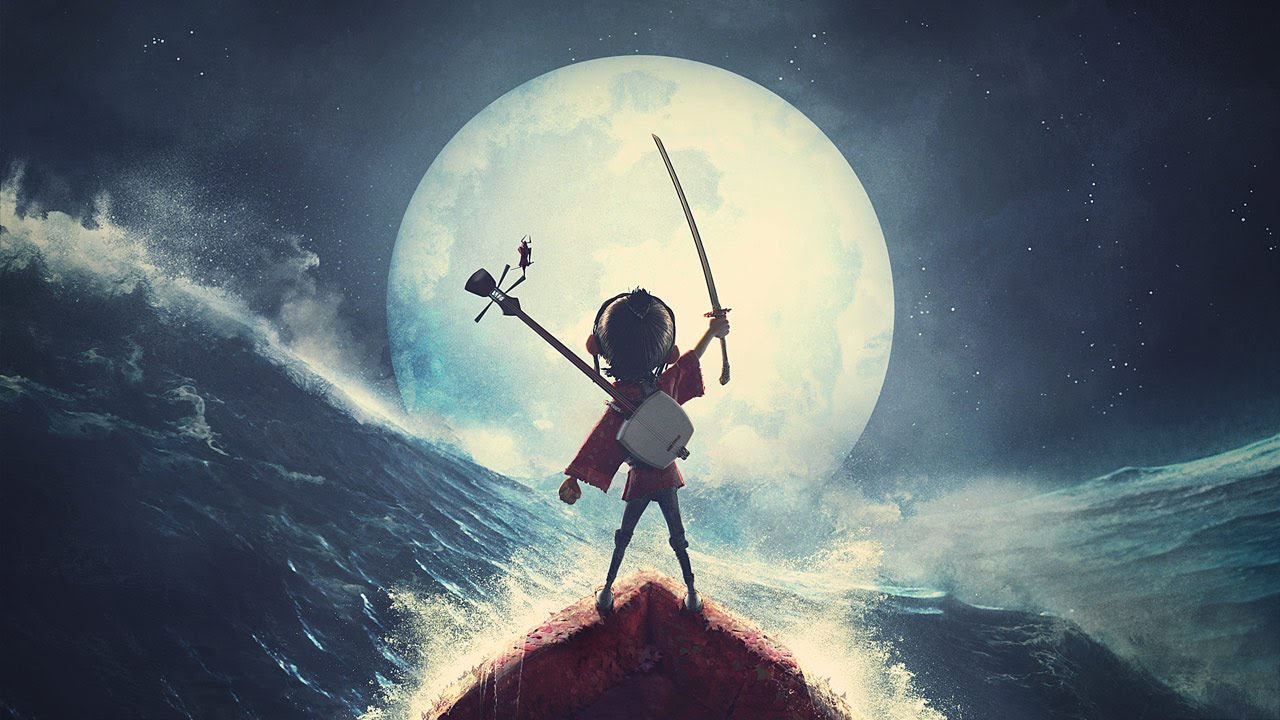I recently had the pleasure of watching Kubo and the Two Strings in a quiet movie theatre, and boy, was I blown away. When I watched the trailer (it wasn’t the one below, but I can’t remember which one I watched), I thought that Kubo was a girl until the text, “His adventure begins…” hovered across the screen.
I mean, the character was Asian, and it was of a young child. Naturally, I thought the voice belonged to a girl because I wanted to see more female characters who are not white.
Despite that slight disappointment (or rather, misaligned expectations), I loved almost everything about its movie, especially how artfully it was made. I had the sense that some really hi-tech animal techniques were used alongside stop motion, and watching the making of these proved it.
Spoilers below: tread with caution.
Look how beautiful this is!
Set in feudal Japan, Kubo’s story opens with his mother trying to escape from her family by sea. A wave washes over her, and somehow, she and her son survive. They set up a home on the top of a mountain, and everything is peaceful, for a while. To make a living, Kubo tells stories in the nearby village — these are the stories that his mother told him, and unbeknownst to him, it’s true. The story Kubo tells is one of the great samurai Hanzo (not the archer dude in Overwatch) who has to defeat the Moon King, and before darkness falls, he has to return to his mother.
Obviously, he forgets about this rule and discovers that the stories he tells are actually true. After his mother fights against his really creepy aunts, he escapes and ends up in a snowy landscape, with a monkey for a companion. Later on, a beetle joins in the fun. As he goes on the journey, his magical powers grow stronger, and he has to find the three key armaments of his father to defeat the Moon King.
Lest I spoil the movie any further, Kubo and the Two Strings uses great cinematography and its own props to foreshadow how to defeat the Moon King. It is a great example of using visuals to drop hints to keen observers, for sure. Each scene is also carefully crafted and each origami figurine or structure featured folds and unfolds itself in a surreal dream. The movie’s aesthetic alone does not make it great, however; the screenplay ties everything together, save for one or two mawkish lines of dialogue that I didn’t really mind, all that much.
However, one of my big misgivings about the movie is the white voice actors, save for George Takei and Cary-Hiroyuki Tagawa. A Japanese movie should feature more talent from people who are of Japanese descent, and it’s sad that the three main characters, Monkey, Beetle and Kubo, are voiced by Matthew McCounaughey, Charlize Theron, and Art Parkinson. Perhaps the producers thought Mr Takei wasn’t suited for the main role, but using the same actor to fill in the roles that go under “people of colour” defeat the notion of making diverse movies. Not all Japanese people look the same, and I do believe that there are other aspiring Japanese actors out there who deserve an opportunity to showcase their talent.
I find it impossible to boycott a movie when I know a lot of artistry and effort was put into it, and watching the behind-the-scenes reels shows that. But whitewashing an animated cast does nothing for the industry, when there are so many diverse voices that could contribute to telling a strong, authentic story.
